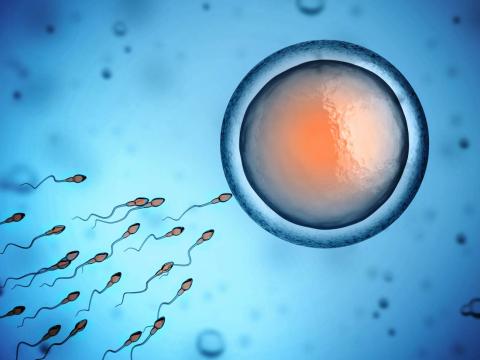Sex and gender are associated with distinct brain network patterns
Both sex and gender are associated with distinct networks in the brains of boys and girls, according to an analysis of brain images of 4,757 children in the US. Understanding these neurobiological patterns is important for identifying how sex and gender influence health and for developing specific diagnostic tools, the research team writes in Science Advances.

Carles Soriano-Mas - sexo y género EN
Carles Soriano-Mas
Lecturer of the Department of Social Psychology and Quantitative Psychology at the University of Barcelona, researcher at the Bellvitge Biomedical Research Institute (IDIBELL) and CIBERSAM
In this paper, Dhamala and colleagues studied the association, in a sample of boys and girls, between brain function and sex and gender, considering the latter two measures independently. Thus, while sex referred to sex assigned at birth, based on visual inspection of genitalia, gender referred to a person's social role. Brain function was conceptualised as interregional connectivity, i.e., as the synchronisation in neural activity between different brain regions, a measure that has recently become popular for defining global brain function.
The study analysed a sample of more than 4,700 children aged 9 to 10, whose sex was known at birth, and obtained a brain image and two measures of gender, one reported by the participant and one by their parents. The image analysis methods and statistical analyses used were adequate to answer the questions posed, so the conclusions drawn from the study are well supported by the data obtained.
These conclusions indicate that sex and gender are associated with different patterns of connectivity between brain networks, with sex being associated with a more circumscribed pattern and gender with a broader pattern involving almost the entire cerebral cortex. The results suggest that the greater complexity of gender, a measure that includes multiple facets of behaviour, is reflected in a more complex and widespread pattern of brain connectivity. This association between gender and brain function, however, was only found using measures provided by parents, but not self-reported by participants. This is likely due to the low variability observed in the self-reported gender measure relative to sex, which may be related to the young age of the participants and the fact that gender self-concept develops more robustly later in life.
Although the correlational nature of the study does not allow causal relationships to be established, the results indicate that sex and gender are not the same measure, something already understood at the societal level, but which can now also be defended at the neurobiological level. Furthermore, the results show that social variables, such as gender, are also associated with specific neurobiological patterns, emphasising the complexity of the relationships between variables at different levels of analysis. On a practical level, this study suggests that gender, and not just sex, may be an important variable to consider in the development of personalised medicine therapies, especially for the treatment of mental health problems that may be based on the modulation of brain connectivity circuits.
Anne-Lise Goddings - sexo y género EN
Anne-Lise Godding
Clinical Academic Consultant in Paediatrics and Adolescent Health at London North West University Healthcare NHS Trust; and Honorary Senior Clinical Lecturer at Imperial College London with a research background in adolescent cognitive neuroscience and neuroimaging
This study reports relatively weak brain functional connectivity associations with parent-reported ‘gender’ over and above sex assigned at birth. It’s crucial when interpreting this study to contextualise that this ‘gender’ measure focuses mainly on how much parents report their children engaged in stereotypical ‘gendered’ play. Parents answered questions including about how much their child plays with “girl-type dolls such as ‘Barbie’”, “boy-type dolls such as ‘GI-Joe’”, “how much they play sports with girls (but not boys)” and “with boys (but not girls)”, and how much they “imitate male and female TV and movie characters”.
This measure of gender doesn’t capture the broader concept of gender identity which incorporates an individual’s own feelings and perceptions of their identity.
In the absence of clear hypotheses or accounting for confounders, the findings of the study are of limited impact and should be interpreted with caution. Later Adolescent Brain Cognitive Development project (ABCD) study waves and other cohort studies may help to improve understanding of this complex topic.
“I don’t think I have any declarations to note, but for full openness, below is my current and previous funding.
- Current funding bodies: MRC, NHS.
- Previous funding bodies: NIHR, MRC, Academy of Medical Sciences.
I haven’t had any industry funding of my own research, scientific meetings, advisory roles or employment. I’m not aware of any industry funding to my current or previous department.”
Elvisha Dhamala et al.
- Research article
- Peer reviewed
- People



